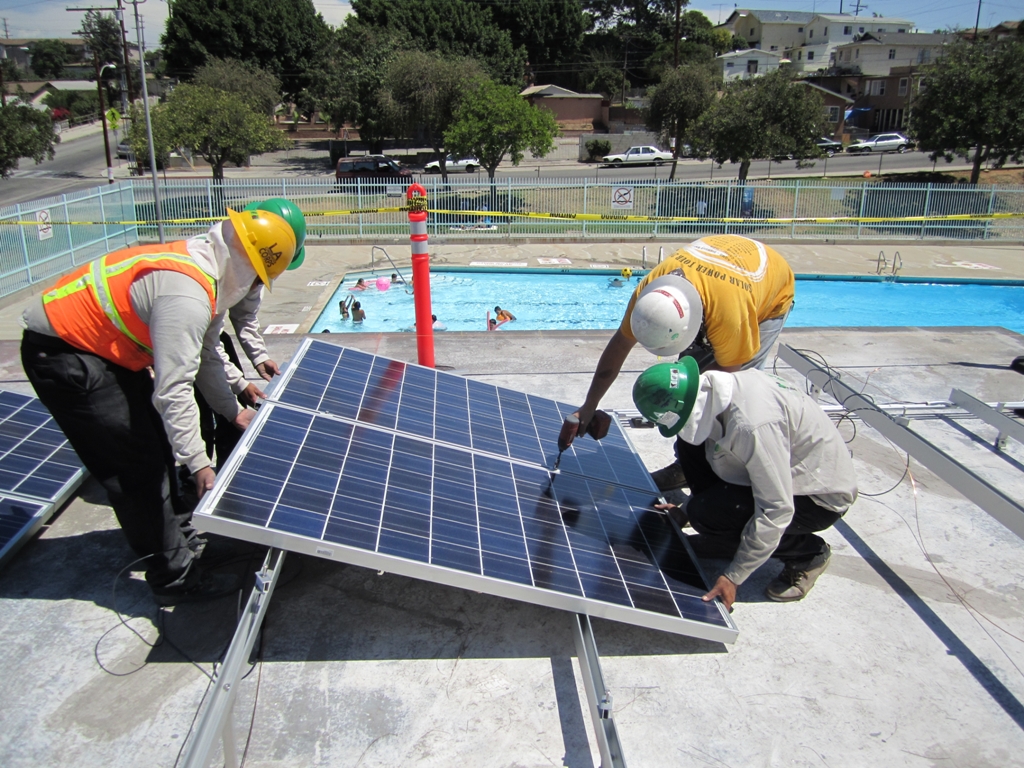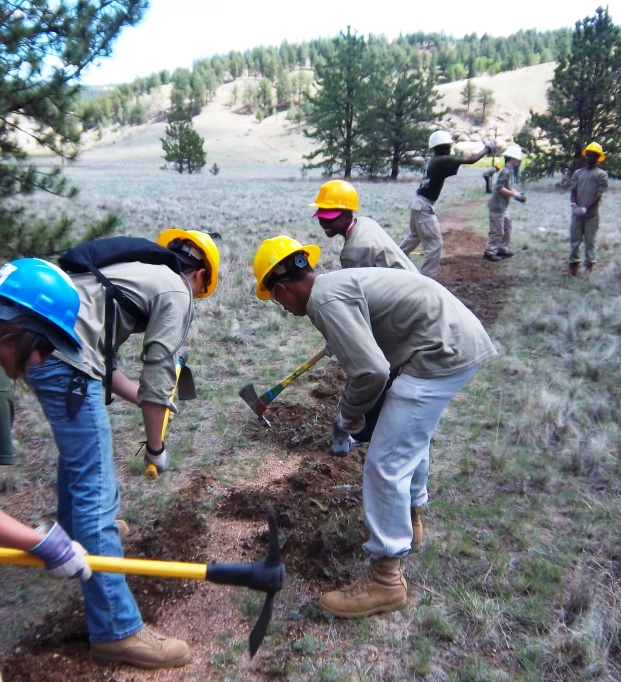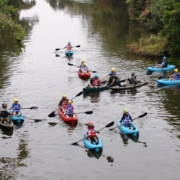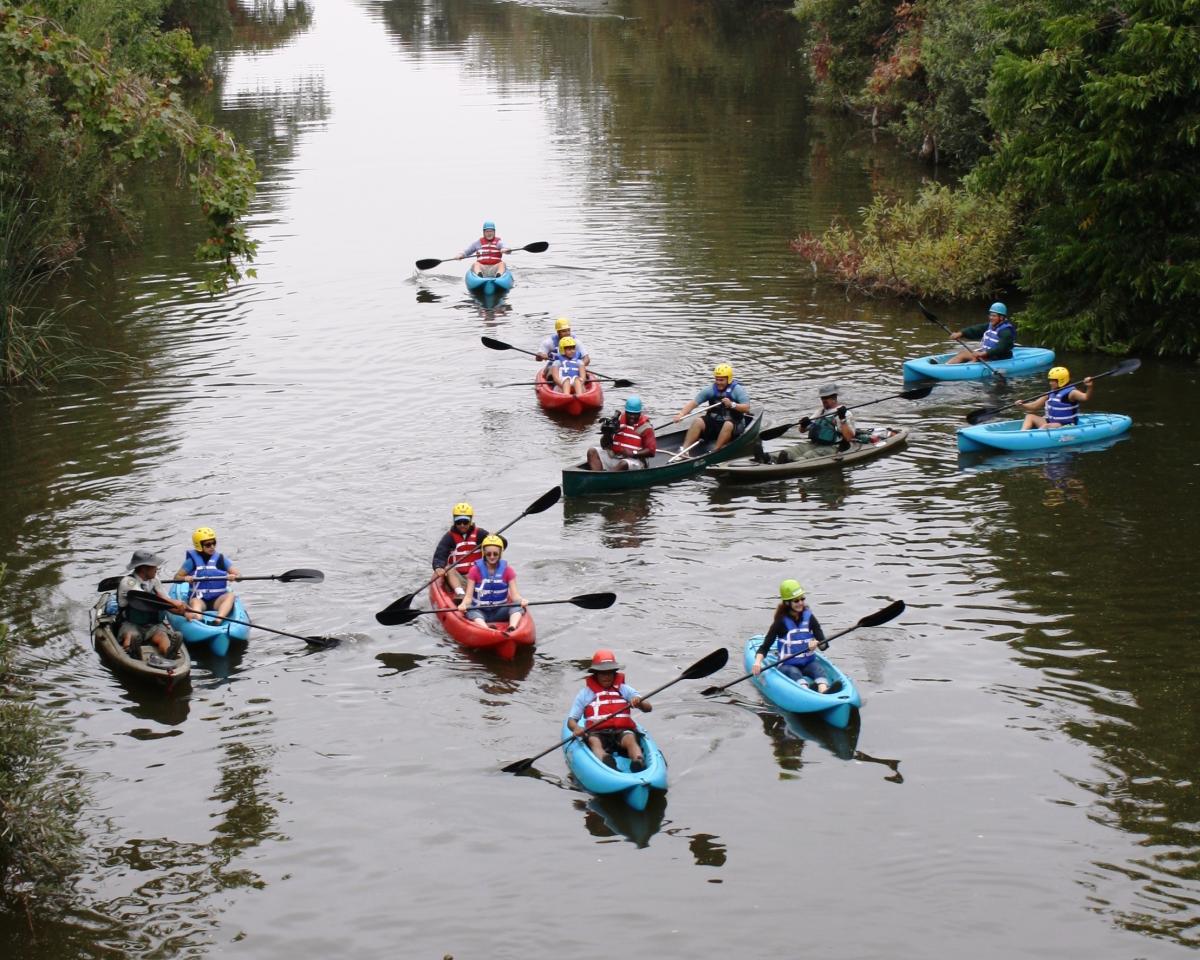
Winner: Urban Corps of San Diego
When constructing work/learn service projects, youth conservation corps must assess a community’s needs. In San Diego, wildfires pose a constant threat.
In the spring of 2011, Urban Corps of San Diego County’s “Fire Fuel Reduction” program, or FFR, helped clear a path to a better future for more than 300 Corpsmembers. They received paid on-the-job training in the area of fire fuel reduction, while helping create 250 acres of fire defensible space in San Diego County. In the process, many young people developed an interest in pursuing a career in fire fighting, an added benefit for the San Diego Workforce Partnership, who came to Urban Corps last October with a budget of $1.1 million in ARRA and Workforce Investment Act dollars for youth employment through fire prevention and mitigation services.
It was Urban Corps that called upon its community partners and quickly leveraged the project to over $1.7 million, substantially increasing the FFR program’s scope, impact and ability to serve youth and community. FFR proved exceptional in many ways.
From the beginning, the program represented a departure from Urban Corps’ typical Corpsmember enrollment procedure and numbers. Prior to FFR, enrollment was at approximately 140 youth. FFR allowed the organization to provide a three-tiered program to 318 young adults ages 18-25 for 12 weeks. Urban Corps rapidly mobilized and coordinated a massive recruitment effort. To qualify for the program, applicants had to meet low-income guidelines and have at least one barrier to employment such as a disability, limited English proficiency, a court record, or history in the foster care system. More than 100 were hired by the end of March.
The participants were scheduled to receive an intensive training followed by work in the field for four days per week and attendance at Urban Corps’ onsite charter high school the remaining one day per week to receive academic instruction, class credit, and a rigorous work readiness education through the Corps-to-Career Department. As a result, the FFR program created unprecedentedly large high school enrollment at Urban Corps Charter School, expanding the number of youth served by 100%.
Another exciting aspect of the FFR program was the additional impact brought in by Urban Corps’ leveraged partnerships. In an unprecedented move, the organization was able to partner with the U.S. Forest Service and the Viejas Fire Department, a fantastic opportunity for Corpsmembers to receive training and gain on-the-job experience alongside professionals. Additional sponsors were Sweetwater Authority and the City of Chula Vista, both in need of fire mitigation services. Most notably, Viejas Fire Dept. brought an in-kind match of certified training for the participants, greatly enhancing the overall value of the program for Corpsmembers.
Before being sent out in the field, participants attended an intensive orientation training on fire fuel reduction methods and leadership, including safe hand tool and chain saw usage. The professional certification training included 4 courses attended by FFR participants and staff and led by Viejas personnel. Course material covered the primary factors affecting the start and spread of wildfires, recognition of potentially hazardous situations, entry level firefighter skills, and an introduction to the function, maintenance and use of chain saws and their wildland fire application. The training resulted in 65% of the FFR participants earning Chainsaw Operation Certification and LS-180 leadership training, leaving them qualified to join a fire hand crew.
In the field, Corpsmembers gained valuable job skills while removing vegetation and assisting with controlled burns. The youth experienced first-hand what fire fighters do in the off-season to prevent wildfires. They learned about firebreaks, shelters, and native plants. At Bell Middle School in San Diego, FFR crews helped create a safe passage to school for students by clearing a well traversed canyon path. The project was highly publicized and brought considerable attention to the FFR program and its partners. In total, crews produced more than 10.8 million square feet of defensible space, leaving San Diego County a much safer place to live for its 3 million residents.
An unexpected benefit of the FFR program has been a significant increase in the Urban Corps’ capacity to serve its target population, specifically through its ability to obtain similar service projects. The success of this program has paved the way for potential funding for future fire fuel reduction partnerships. So many benefitted through FFR, most of all the young people, that the Corps expects this program to be duplicated year after year. Plus, with enrollment more than doubling, Urban Corps experienced a challenge and a reward that taught them that they were capable of serving more young people and that they can and must create additional opportunities for youth. As such, they shifted their charter school focus this past summer and adopted a new calendar with more learning days. Starting this fall, a week-on/week/off education schedule is enabling the Corps to train and educate 30% more youth.
















































































